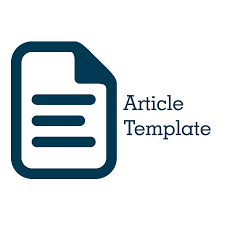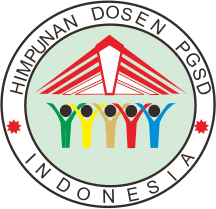Analisis aktivitas pembelajaran SBdP muatan seni musik pada kurikulum merdeka ditinjau dari perspektif pendidikan seni holistik kelas IV sekolah dasar
Abstract
This research is intended to describe and analyze the learning activities of SBdP (Seni Budaya dan Prakarya) music content in the fourth grade of the Merdeka curriculum from the perspective of holistic art education. Holistic art education encompasses three aspects: (1) mind, (2) body, and (3) spirit. This is a qualitative case study. The approach involves an intensive, detailed, and in-depth examination of the research subject to gather comprehensive information about the topic.
The subjects in this study include learning activities, educators, and fourth-grade students at SD Negeri Setono. Data collection techniques include observation, interviews, document analysis, and documentation. Data validity is tested using source triangulation and techniques. Data collected are analyzed using the interactive model by Miles and Huberman with a conceptual framework based on aspects in holistic art education.
The results of the research are as follows. First, the SBdP music curriculum has developed the three realms in line with holistic art education. The dominant aspect developed is in the realm of Mind (mind), while the realm of Body (physical skills) and Spirit (emotional experience) are still not well-developed. This is due to the fact that developing the body aspect requires musical equipment, while the school's musical instruments and facilities are inadequate, leading to a focus on singing instruction only. The development of the spirit aspect is also lacking due to the absence of intensive activities for appreciating musical works. Second, the learning examined in this research remains predominantly informative and does not provide experiential learning that involves emotional engagement and the development of students' faculties. This is a consequence of the school's limited resources and the capabilities of the educators.
Keywords: education, music, holistic art, elementary school.
Keywords
Full Text:
PDFReferences
Karsono, "Gembira Bermain Musik : Penerapan Model Quantum Learning dalam Pembelajaran Seni Musik di Sekolah Dasar," Mimbar Sekolah Dasar, vol. 3, no. 2, pp. 209 - 221, 2016. [2] N. F. A. Marsiano E, "Faktor-Faktor Penghambat Seni Budaya (Seni Tari) di SMP Negeri 4 Padang," 2019. [3] Rohidi. T, "Pendidikan Seni, Isu, dan Paradigma," 2014. [4] London. P, "Towards a holistic paradigm of art education art education: mind, body, spirit," Visual arts research, pp. 8-15, 2006. [5] D. J. S. Y. Y. N. Karsono, "Penggunaan Kartu Kuarte Untuk Meningkatkan Pemahanan Keberagaman Seni Tradisi Nusantara Pada Siswa Sekolah Dasar," pp. 43-49, 2014. [6] G. D. Subandi D, "Strategi Pembelajaran Musik Ensemble Melalui Media Gamelan Degung Pada Siswa Kelas V Sekolah Dasar," 2017. [7] M. B. Miles and A. M. Huberman, Qualitative data analysis: An expanded sourcebook, 1994. [8] E. R, Konsep Revisi Taksonomi Bloom dan Implementasinya pada Pelajaran Matematika SMP. 2017. [9] Karsono, I. Zulaeha , T. R. Rohidi and Wadiyo, Pendidikan Seni Holistik, Purbalingga: Eureka Media Aksara, 2021. [10] Fatmawati, "Fisika Formulation Of Learning Objectives and Cognitive Problem in Bloom Taxonomy Revision Oriented in Learning Physics" Edu Sains, 2013. [11] Tateo, "Just an Illusion? Imagination as Higher Mental Function," Journal of Psychology & Psychotherapy, vol. 5, no. 6, 2015. [12] Djohan, Psikologi Musik, Yogyakarta: Galangpress Group, 2009. [13] Amalia, "Empati Sebagai Dasar Kepribadian Konselor," pp. 56-58, 2019. [14] J. Hofman, A. Sharma and D. Watts , "Prediction and explanation in social systems," Science, vol. 355, no. 6324, pp. 486-488, 2017. [15] D. M, "Upaya Meningkatkan Hasil Belajar Siswa Kelas II SDN Hais Melalui Penggunaan Model Pembelajaran Kooperatif Tipe Make A Match Pada Materi Empati dan Simpati," Langsat Jurnal Ilmiah Pendidikan dan Sosial, vol. 4, no. 2, 2017.
Refbacks
- There are currently no refbacks.



